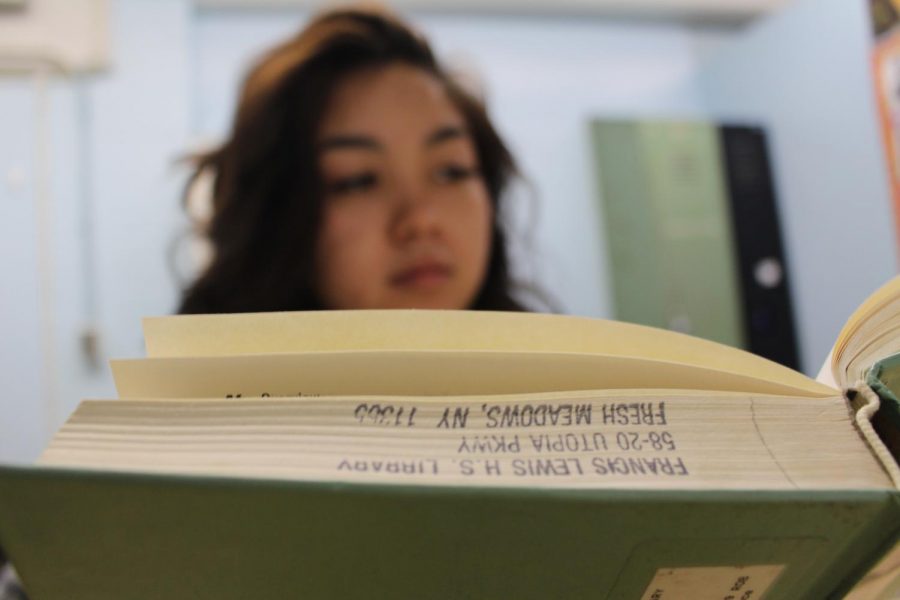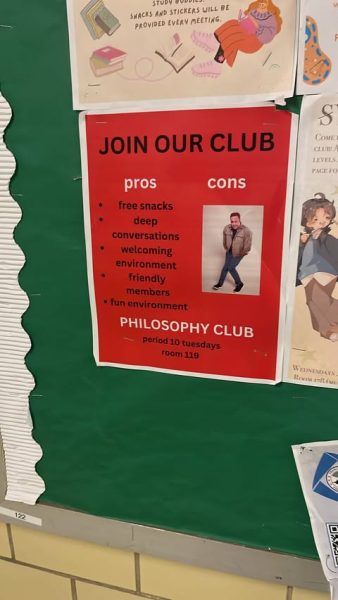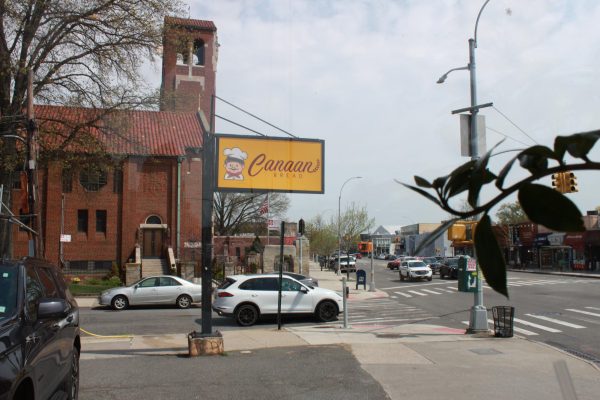Homelessness at Francis Lewis: One Student’s Story
The March gust of wind slapped her across the face as the leafless trees stood watching her every move. Her backpack kept her secure: her blanket for warmth, her products for hygiene, and her MetroCard for bus stops. This is where she slept every day after school. As the steps of students shuffled near the entrance early in the morning, she walked to school without a house to shelter her.
Love Gonzalez, 18, is a student at Francis Lewis High School who has been in and out of homelessness since middle school. Gonzalez first dealt with homelessness by staying in both her mother’s car and her friend’s house.
“It has been all my life that I have just had me and a book bag,” Gonzalez said. “My book bag has been my home. It has carried my belongings and everything that someone would need in a house.”
One in 10 public school students is homeless and resides in shelters, in motels, in hotels, or with relatives — setting New York City with the fifth highest homeless rate in 2018 in the U.S.
“I was everywhere,” Gonzalez said. “I used to wait for bus stops and buses. Almost my whole junior year, I was taking random buses to different places. I think it was mainly bus stops, but it was not on purpose. I did not get a lot of sleep.”
Last year, Gonzalez dealt with family and friend estrangement. She lived on the streets in March 2018 — leaving a mental toll on her health.
“I was out of my mind,” Gonzalez said. “I was in a mental state that everybody was going to leave me. I was okay with being by myself until I could not really take it and I was going crazy.”
Homelessness affected her and her health when friends and family cut ties with her. She went to class, ate one meal at school, used her MetroCard to sleep at bus stops, suffered from insomnia, and struggled with hygiene — all while keeping the month of hardship to herself.
“It really took that solid month of my just being by myself,” Gonzalez said. “I was so used to the streets that I would just leave. There were times that I really did have problems now that I think about it. I really just used to walk out sometimes. I would not tell anyone, and I would just walk out because I was so used to the streets.”
Gonzalez reflected on but remained silent about living on the streets because she worried about being relocated by the New York City Department of Social Services, starting out at a new school, and entering the foster system. She planned to live on the streets until she turned 18, the age at which social services would be unable to move her.
“I did not have anybody to open up to,” Gonzalez said. “I did not feel like talking to anybody because nobody pushed me to.”
Gonzalez felt as though the system working to help her would go against her wishes, so at the end of March, she was taken in by her aunt and confided in one of her closest friends, senior Brittney Thurston.
“I was like a mom and a best friend to her,” Thurston said.
Thurston gave her washed clothes to change into, stood up for her, and consoled her.
“She would talk to me about everything, and I would consult with her, make sure she was okay, and tell her it was okay how she was feeling,” Thurston added.
Assistant Principal Ms. Palomino encouraged students to tell school faculty about homelessness.
“There is more we could do, but we do not know enough,” said Ms. Palomino said. “Sometimes we do not find out from the kids themselves; we find out from their friends.”
Ms. Palomino said that at least eight students at Francis Lewis High School identify as homeless, but she suspected the number is higher than what the school has recorded.
“If you know a child is homeless, please let us know,” Ms. Palomino added. “If you know a child is in need, always let us know because you are doing them a disservice by not telling someone.”
Since the 2010–2011 school year, homelessness has increased by 66 percent. The rise shows how local homelessness is.
“Part of the stigma of being homeless is that sometimes they are embarrassed to say so,” Ms. Palomino added.
Principal Dr. Marmor also urged students to come forward and ask for help.
“We have a lot of resources at the school to try to support students,” Dr. Marmor said. “We have multiple social workers, guidance counselors, and spot counselors. We have all kinds of support in place to try to help with the additional challenges that they face.”
Dr. Marmor said the school helps homeless students find temporary shelters and pay for supplies, yearbooks, tuxedos, gowns, and senior-trip dues. The school alleviates the struggles homeless students face by providing them an education so that its services “ease the transition back into a stable situation,” Dr. Marmor added.
Gonzalez currently lives with her aunt and her grandparents, who have supported her by taking her to see her therapist and giving her a new home. She wishes to pursue a career in the arts after high school. She offered advice to students dealing with situations where family and friends are hard to reach as she has persisted in living past homelessness.
“Go get the help you need,” Gonzalez said. “I feel like everybody needs help. It is not your fault. Whatever is happening to you, it is not your fault.”
Brandon Yam is the National News Editor of FLHSNews.
A junior at Francis Lewis High School, Yam is part of one of two sets of triplets in his family who...













